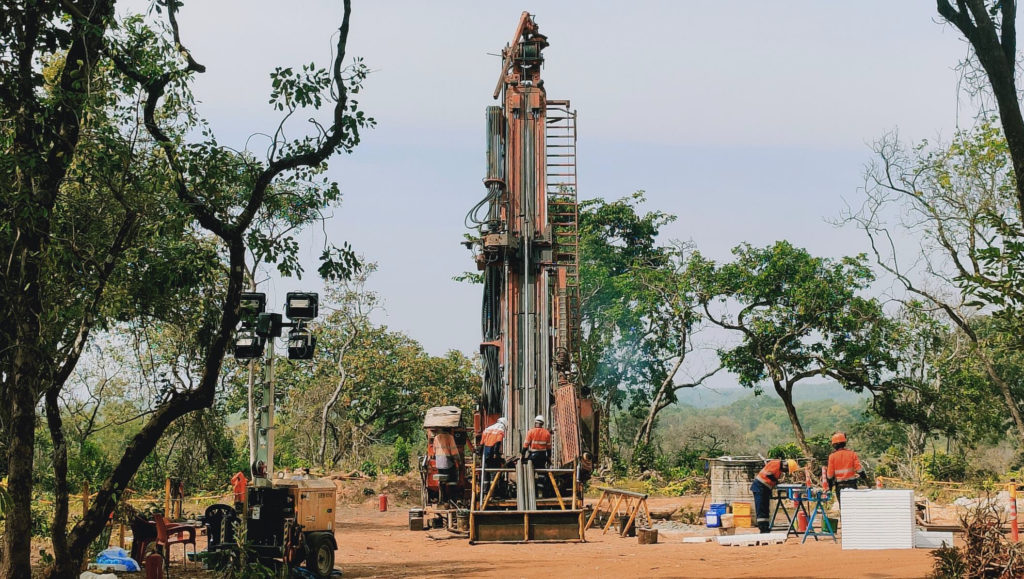Study hints Predictive Discovery’s Bankan project could be Guinea’s ‘largest gold mine’

A prefeasibility study for Predictive Discovery’s (ASX: PDI) Bankan gold project in Guinea gives it a net present value more than $210 million higher than its capital costs.
The Bankan PFS, released on April 15, calculates an after-tax net present value (at a 5% discount) of $1.4 billion, with an internal rate of return of 41.7%, based on current spot prices of around $2,300 per ounce. The study gives Bankan an upfront capital cost estimate of $456 million. Using a conservative gold price of $1,800 per oz., the NPV sits at $668 million and the IRR at 25.4%
“Completion of the PFS now confirms the project is not only one of the largest gold discoveries in West Africa for a generation, but also a future Tier-1 gold mine,” Predictive managing director Andrew Pardey said during an April 15 conference call. “It can become Guinea’s largest gold mine,” he said.
West Africa, including Guinea, is seeing a surge in mining activities, with both expansions of existing mines and new exploration interests. In Guinea, significant growth in gold mining can be seen, highlighted by projects like the Kiniero gold project. Robex Resources (TSXV: RBX) is redeveloping the historical mine with a $160 million investment, aiming to produce around 90,000 oz. of gold per year over 9.5 years.

BMO Capital Markets mining analyst Raj Ray said in a note that the Bankan study results were largely in line with expectations, “with some pluses and minuses.”
“The PFS highlights a potentially quality project with significant scale and relatively simple executable design,” the analyst wrote.
Probable reserves conversion
At Bankan, a 74% conversion rate from indicated resources to probable reserves underpins the PFS, now estimated to host 57.7 million tonnes grading 1.64 grams gold per tonne for 3.05 million oz. of metal, the bulk of which is slated for open-pit mining. The resources are found across the NEB open pit, NEB underground, and BC open-pit areas. Bankan also ranked sixth in The Northern Miner’s latest Drill Down global gold assays.
The mine plan entails a yearly output of 269,000 oz. gold over a 12-year life. Most of the ore will be extracted using conventional open pit methods, which include drilling, blasting, and hauling with trucks and shovels at the NEB and BC deposits.
The mine plan involves underground mining beneath the open pit using transverse long-hole open stoping with paste fill for deeper ore. The plan also calls for building and operating a 5.5-million-tonnes-per-year processing plant using conventional carbon-in-leach technology with upfront gravity recovery, expecting high recovery rates of 92.6% for the NEC deposit and 89.5% for the BC deposit.
The two-year construction period will involve establishing initial infrastructure and developing access for the NEB underground mine, which is set to begin delivering ore at the start of operations. Mining at the BC deposit will start about six months before production begins and finish in just over a year.
The NEB open pit will undergo two-stage mining to access high-grade ore early, and the Gbengbeden satellite deposit will be mined in the sixth year.
Room to grow
In the proposed expansion case, the NEB underground mine will mine reserves during the first six and 12 years and draw on current inferred resources during years six to 11, accounting for 12.8% of total gold. The company has completed an environmental and social impact assessment with “no fatal flaws,” according to Pardey.
Predictive has identified several opportunities for improvement in exploration and resource definition, which could extend the mine life and enhance project economics. These include infill drilling, regional exploration, geotechnical assessments, metallurgical optimizations, and operational refinements to maximize efficiency and reduce costs.
The company is preparing to translate key documents such as the PFS and the environmental assessment into French to comply with Guinea’s regulatory requirements. Predictive has started work on a definitive feasibility study and is pursuing an exploitation permit.
BMO’s Ray said the next key catalyst is the receipt of the exploitation permit. The company aims to secure that within six months of submitting the PFS and impact assessment, which is expected soon.
On Monday, Predictive’s shares closed in Sydney at A$0.245 per share, 12% below the 12-month high of A$0.25 achieved on April 12, having touched a low of A$0.15 over the past 12 months. It has a market capitalization of A$456.8 million.
{{ commodity.name }}
{{ post.title }}
{{ post.date }}


Comments